APIS Dorsata, or lebah madu raksasa
Bee! Everyone knows him, because his presence is very useful for human life. This can be seen from its reproduction in the form of honey, when talking about honey, it cannot be separated from its relationship with the producer, namely bees. So honey is very closely related to the honey bee.
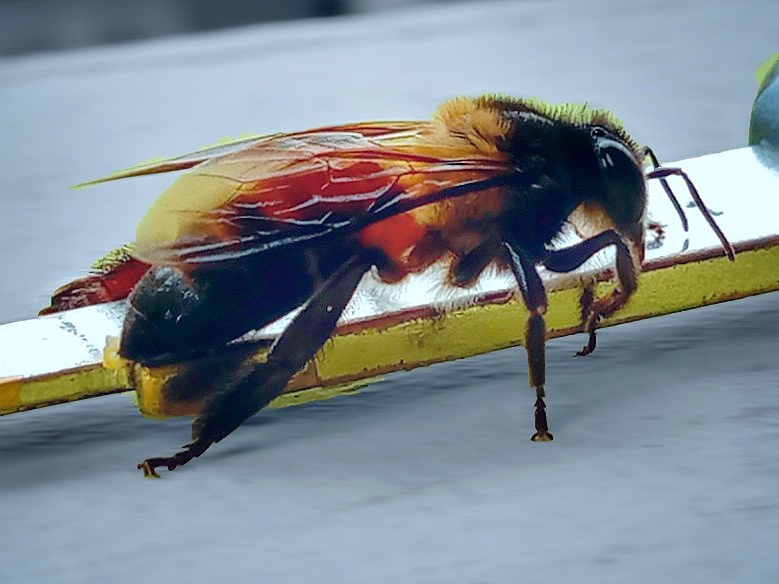
The giant honey bee or in scientific language known as Apis Dorsata, is often found in forest areas and often does not like crowds, this can be seen from every nest he makes with an elongated shape downward. Each location away from the crowd makes them look not to be disturbed if they are forming a nest. So if you look in an urban location as you can see in our area, of course he chose a location that is high and difficult to reach.
Although the explanation above seems very difficult to find in densely populated areas, in our location, namely Lhokseumawe City, we often see nests attached to every tall building or in every tall tree, meaning that it is difficult for the general public to reach. But not by certain people (honey charmers) who always wait and use their nests to take honey.
The purpose of placing the nest in a grove of mangrove trees or other, or can be said to be placed in a safe location from the wind with the aim of not being uprooted from strong wind movements, generally seen if it is placed in an unprotected location, the newly formed nest will fall down, this is influenced by strong tidal winds and blows of wood branches that are often released and then hit the new nest which is only about a day or two old.
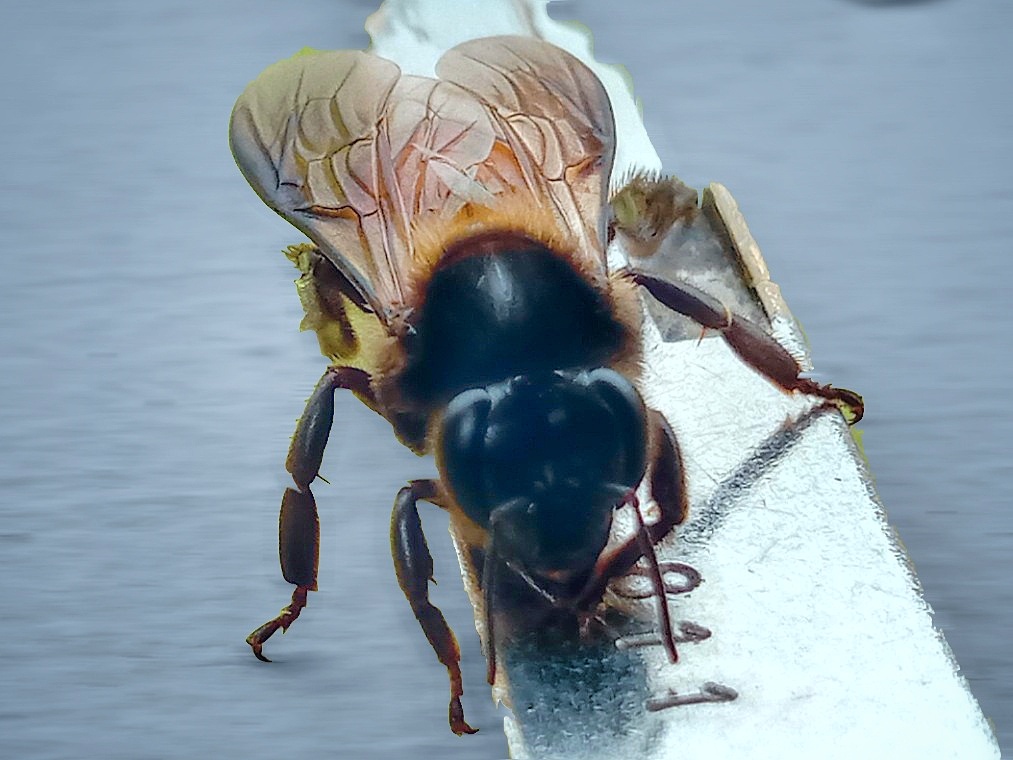
Our community here, especially in the south of the city or in the coastal areas, is very common when entering certain months, to more clearly see their presence here in this area, you can see the prosentase below.
| Number | Month | Number of nests or population |
|---|---|---|
| 1 | January-March | 70 % |
| 2 | April-May | 50 % |
| 3 | June-August | 20 % |
| 4 | September-December | 10 % |
This percentage is calculated based on the number of existing habitats
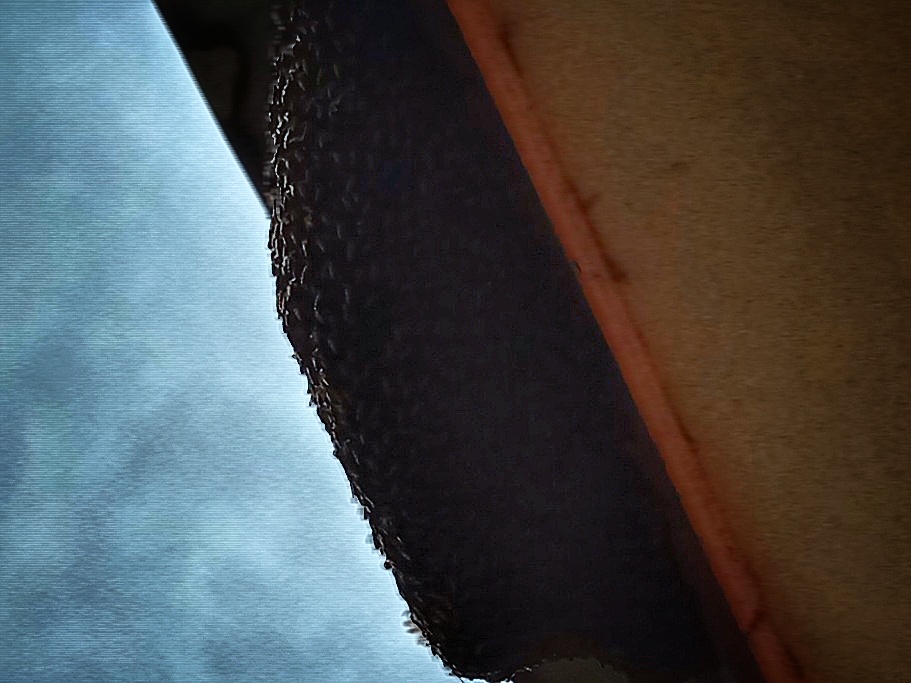 |  |
|---|
Thus, it can be concluded, when entering certain months, such as January to March, they will see the presence of their nests in large numbers, of course at certain points as described above.
When entering certain months, especially in our area known as the tropics, the presence of nests will be less and less visible, which can be seen in certain locations, such as mangrove trees and several other trees far from residential areas. Then besides that, when we enter September and December, our area often experiences rain and strong winds, so their nests will be placed in thick mangrove trees in river areas or other areas.
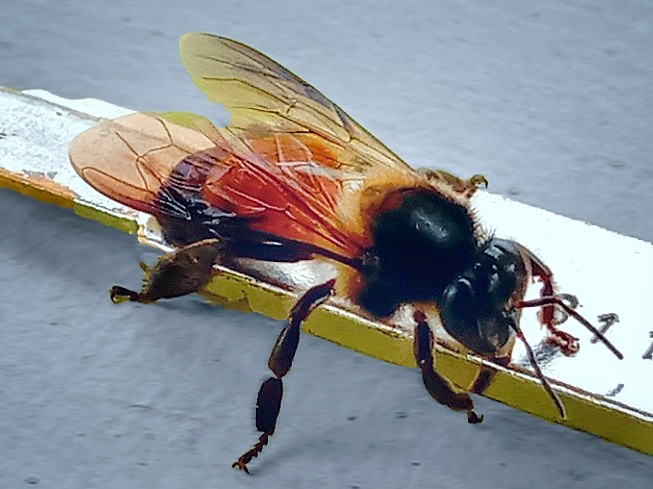
This year, at the beginning of the year or at the beginning of January-March, there are very many, the nests are very clearly visible to the people here in densely populated areas, even though the nests are placed in a high location, the public can see from below.
This large population, I myself was amazed when I saw this honey bee, one of which flew and stood on the table as a location for us to relax in the house. It looks like this bee, likes the motorcycle key object (as shown in the picture). They like this object as a new location, perhaps detecting something there. So that I have more freedom to pour pictures.

He must have just come from his nest, and accidentally been here. If you experience this, it's best not to disturb him and let him play as he pleases. Because according to personal experience, even though he was alone, separated in his colony he was still able to feel when he saw disturbances.
It will sting with thorns located at the tip of lower abdomen, if it comes into contact with your skin, and it will stab with a weapon or thorn in your skin. The sting will swell by itself.
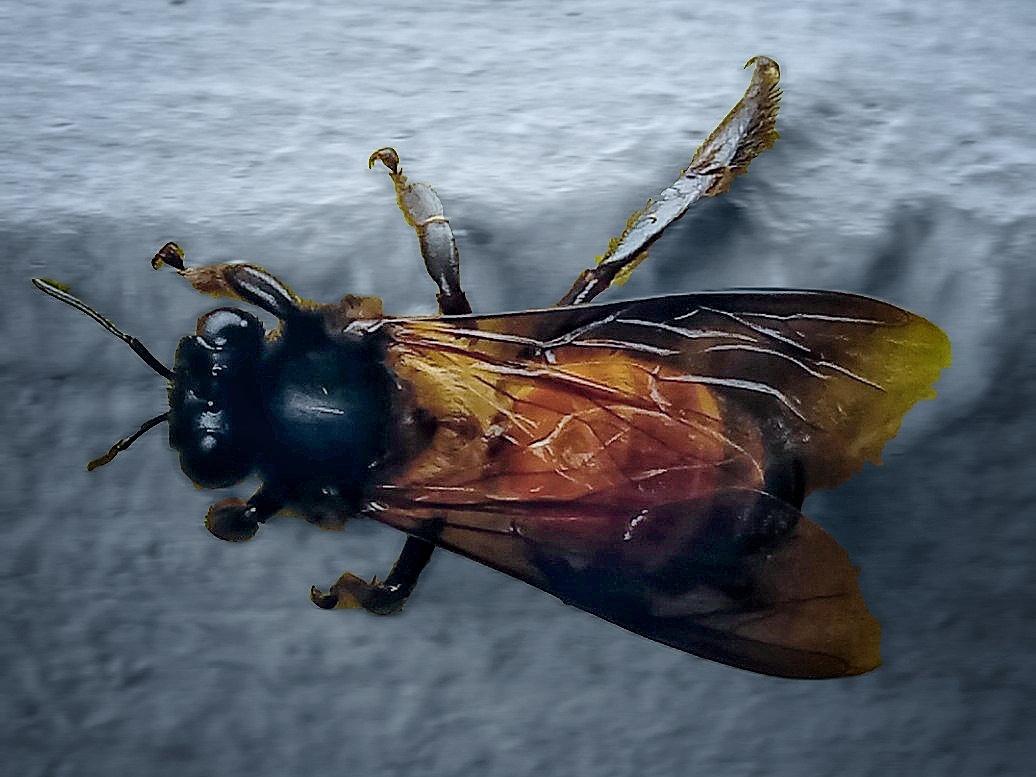
Even though he flew to find another location as a search, this one bee still returned to the key object, while smelling and examining the scent of the object itself.
I myself know what doing, of course sniffing an object that tastes sweet, because the key to my motorbike has a coffee scent on it that accidentally hits the key object, so it's no wonder why he goes back and forth and feels comfortable in that object
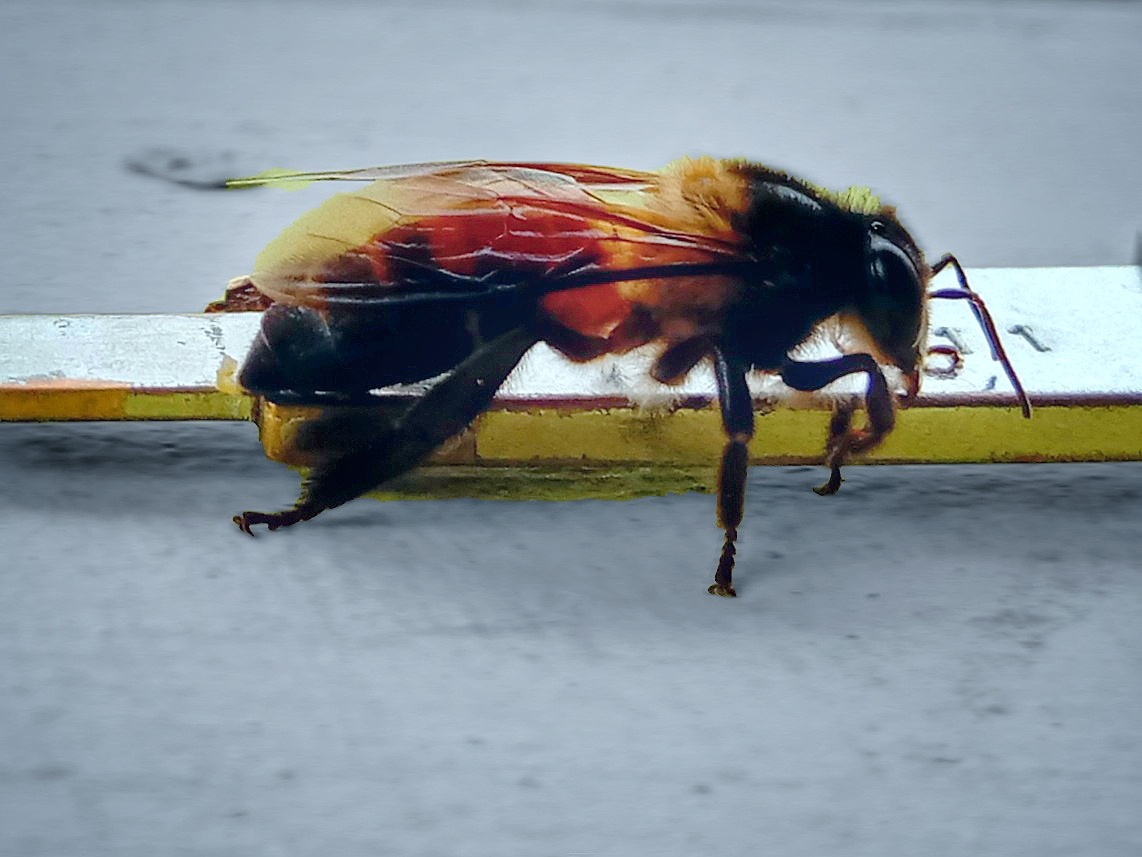
For a few minutes this one bee, sucking on every sweet spot on each outside of the motorcycle lock body, dissatisfied at the bottom, he kept looking elsewhere.
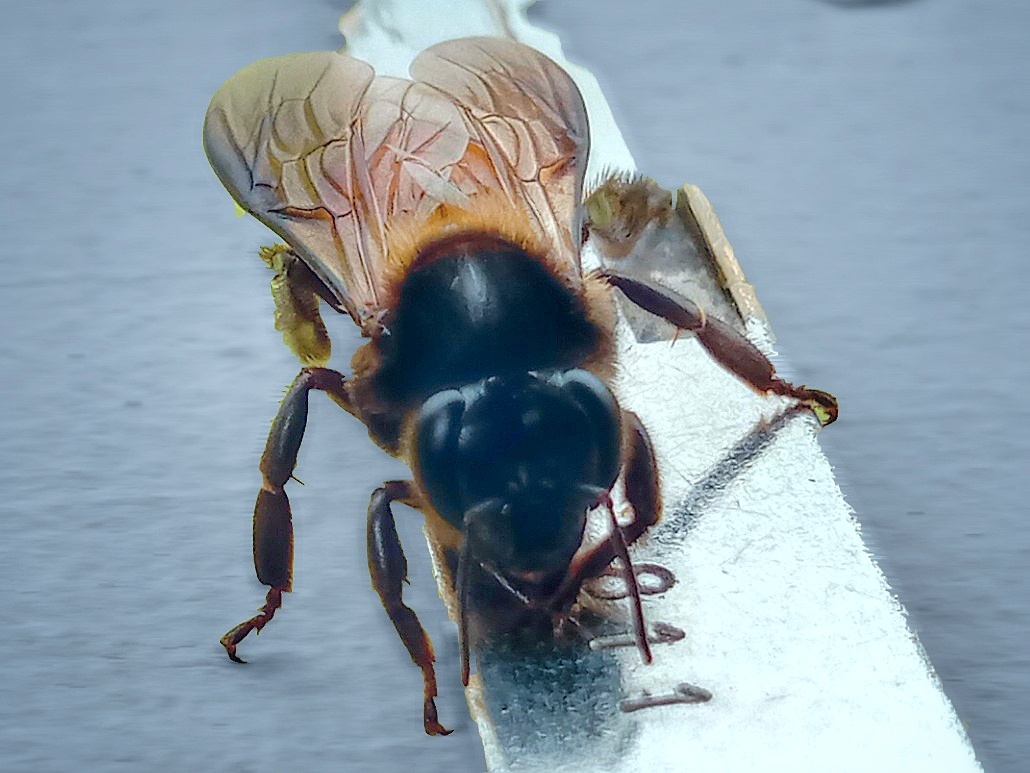
His mouth and front hands seem to move quickly when they find something sweet, it's great to see this character teach us something he likes, so we know that bees besides liking flower nectar also often like sweet liquids.
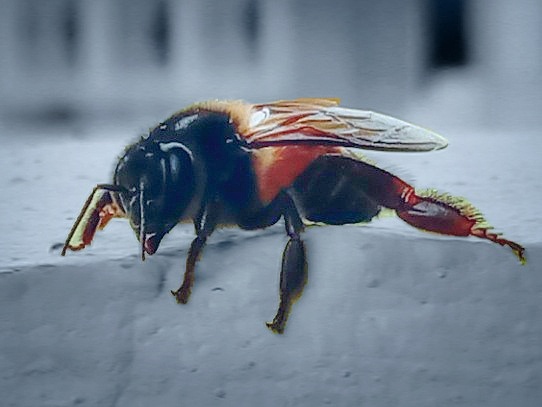
Then myself, accidentally splashed some liquid (coffee residue) on the next wall to distract them, it's true he was enjoying the sweet liquid, it was seen that he moved away from the key object and was on the wall, where there was a little sweet liquid.

His enthusiasm for achieving something is commendable, his detection speed is the same, he will always feel something fluid that he likes, this opportunity also puts him in a good position, because I have more freedom to take every part of his pose, in taking several photos.
How, if you experience the same thing, exactly with my situation today, of course you will also do the same thing, or maybe you will think differently. If it is true then please give a little comment in the section that has been provided. Don't forget to give support and kata-kata manis. Thank you
You Can See Mee In 



About Author
Krue Seumangat!
Welcome to this simple blog. The author is a full-fledged nature lover, in his spare time likes to write, read and always likes something new, wants an innovation. Passion invites people to always learn. Likes to explore hidden things, and always wants to get ahead. Always upvote and provide suggestions to advance this author.
If you liked the content, don't forget to upvote and leave a comment below. Always want to do good. Thanks very much :)


We appreciate your work and your post was manually curated by @none! from the DNA team!
Reach us on Discord to learn more about the project!
Thank you so much @dna, success always
Hello @soehada. I have read that one way to protect bees is to put sugar water near them. They say that sometimes they get lost or are left behind and hungry. I tried one early morning placing a drop of sugary water near someone who seemed asleep, I put it near her, little by little she approached, drank and when the sun came up she flew away.
We appreciate your work and your post has been manually curated on behalf of Insects Of The World Community. It will be added to the weekly curation report. Keep up the good work.
Thank you so much @@@hive-129253, for supporting me
Congratulations @soehada! You received a personal badge!
You can view your badges on your board and compare yourself to others in the Ranking
Check out the last post from @hivebuzz:
Support the HiveBuzz project. Vote for our proposal!
Congratulations, your post has been added to Pinmapple! 🎉🥳🍍
Did you know you have your own profile map?
And every post has their own map too!
Want to have your post on the map too?
https://twitter.com/soehada12/status/1505829090141487107
The rewards earned on this comment will go directly to the person sharing the post on Twitter as long as they are registered with @poshtoken. Sign up at https://hiveposh.com.